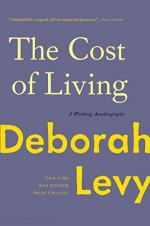
|
| Name: _________________________ | Period: ___________________ |
This test consists of 5 short answer questions, 10 short essay questions, and 1 (of 3) essay topics.
Short Answer Questions
1. In Chapter Six: The Body Electric, what does Deborah say she thought of Holloway Road as?
2. In Chapter Four: Living in Yellow, what does Deborah say helped her handle anxiety?
3. In Chapter Two: The Tempest, what does Deborah say irritated her about her male colleagues and friends?
4. In Chapter Three: Nets, what does Deborah say a mother and wife does?
5. In Chapter Three: Nets, what does Deborah say about children growing up in the patriarchy story?
Short Essay Questions
1. In Chapter Two: The Tempest, how does Deborah apply the Big Silver metaphor to herself? How does she say she applied it to in her own life?
2. In Chapter Three: Nets, what does Deborah say she and her ex-husband did to the family home? What did this action send her back to?
3. In Chapter Five: Gravity, what piece of old writing does Deborah say she compared herself to?
4. In Chapter Five: Gravity, how does Deborah say she set up her shed? What did she furnish it with?
5. In Chapter Four: Living in Yellow, where does Deborah say she moved? How does she say she thought about this move?
6. In Chapter Five: Gravity, who does Deborah say came to her rescue? How did this person rescue her?
7. In Chapter Five: Gravity, what did Deborah say she started going through? What does she say the paragraph she read reminded her of?
8. In Chapter One: The Big Silver, who was the couple Deborah Levy said she oversaw talking? How does she say they met?
9. In Chapter Six: The Body Electric, what does Deborah say she bought? Why did she buy this?
10. In Chapter Four: Living in Yellow, what does Deborah say she repaired? How did this repair become a metaphor?
Essay Topics
Write an essay for ONE of the following topics:
Essay Topic 1
The debate of minor versus major character is prominent in the Cost of Living as Deborah assigns minor and major characterization both to her characters and the people in her life. Who, in your opinion, is a minor character, and who is a major character in the autobiography? Why is it this way? How has the author arranged characterization of her life to achieve the kind of minorization and majorization, the shifts in the patriarchy's story, that she has wanted to achieve?
Essay Topic 2
Naming and its importance, is a major topic as Deborah becomes irritated that her male colleagues only refer to their spouses as "wife." As she says, "If we don't have names, who are we?" (8).
Apply this idea to how Deborah writes the autobiography. Who is named and who is unnamed in the autobiography? Which of the "characters" are male and female who are named and unnamed? Consider this about the naming and unnaming of wives for Deborah's male friends. What are considerations of naming someone, and how does Deborah use this in her autobiography account? Also consider how naming is a kind of seeing, and not naming is a kind of unseeing.
Essay Topic 3
Deborah Levy begins her autobiography:
"As Orson Welles told us, if we want a happy ending, it depends on where we stop the story" (1).
Why do you think this is the first line of the autobiography? And how does the ending of the book tie into the idea of a happy ending, or an ending where the story stops? How does happiness, in life, in ending, in grieving and death, tie into the autobiography?
|
This section contains 970 words (approx. 4 pages at 300 words per page) |

|




